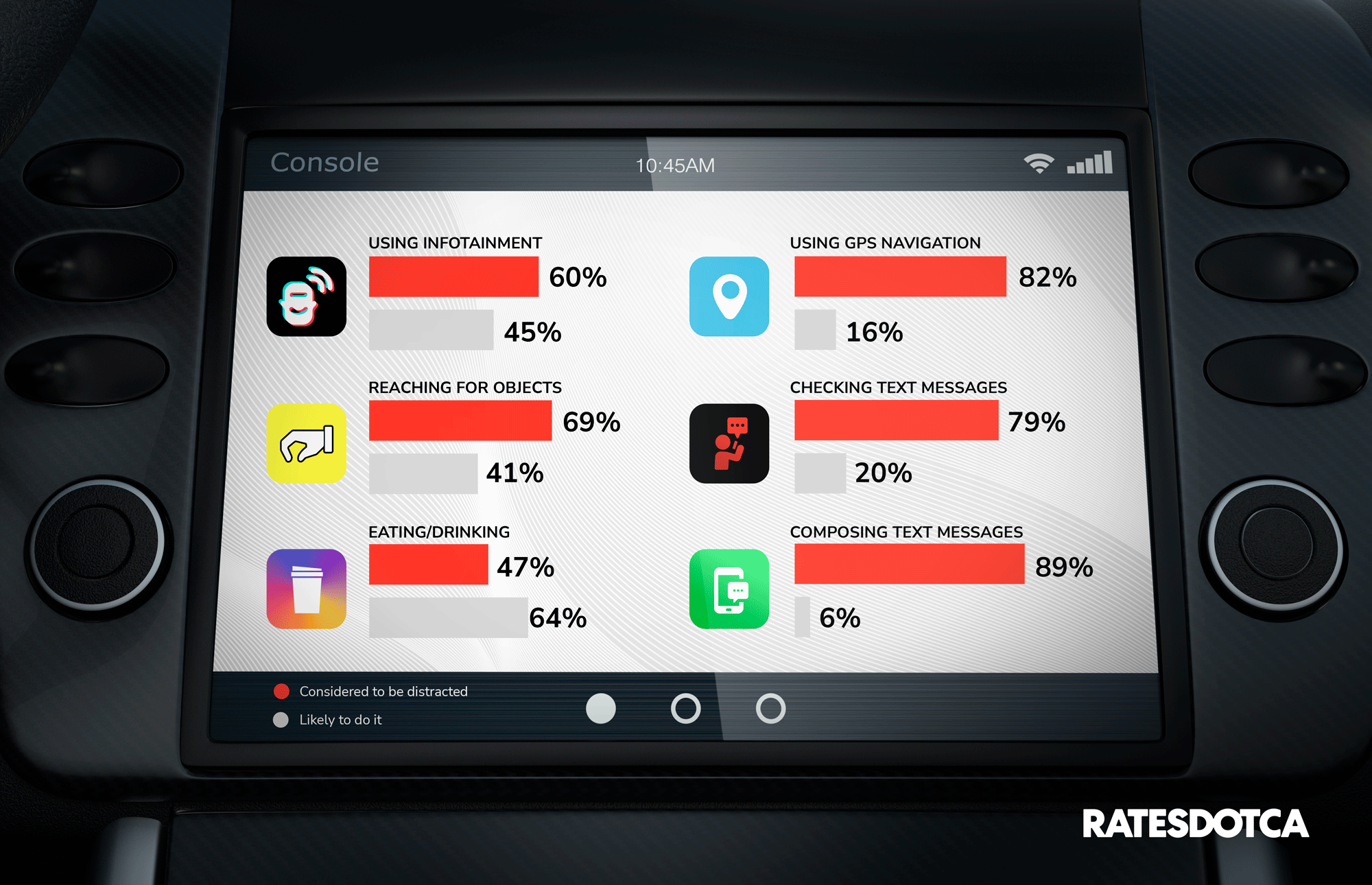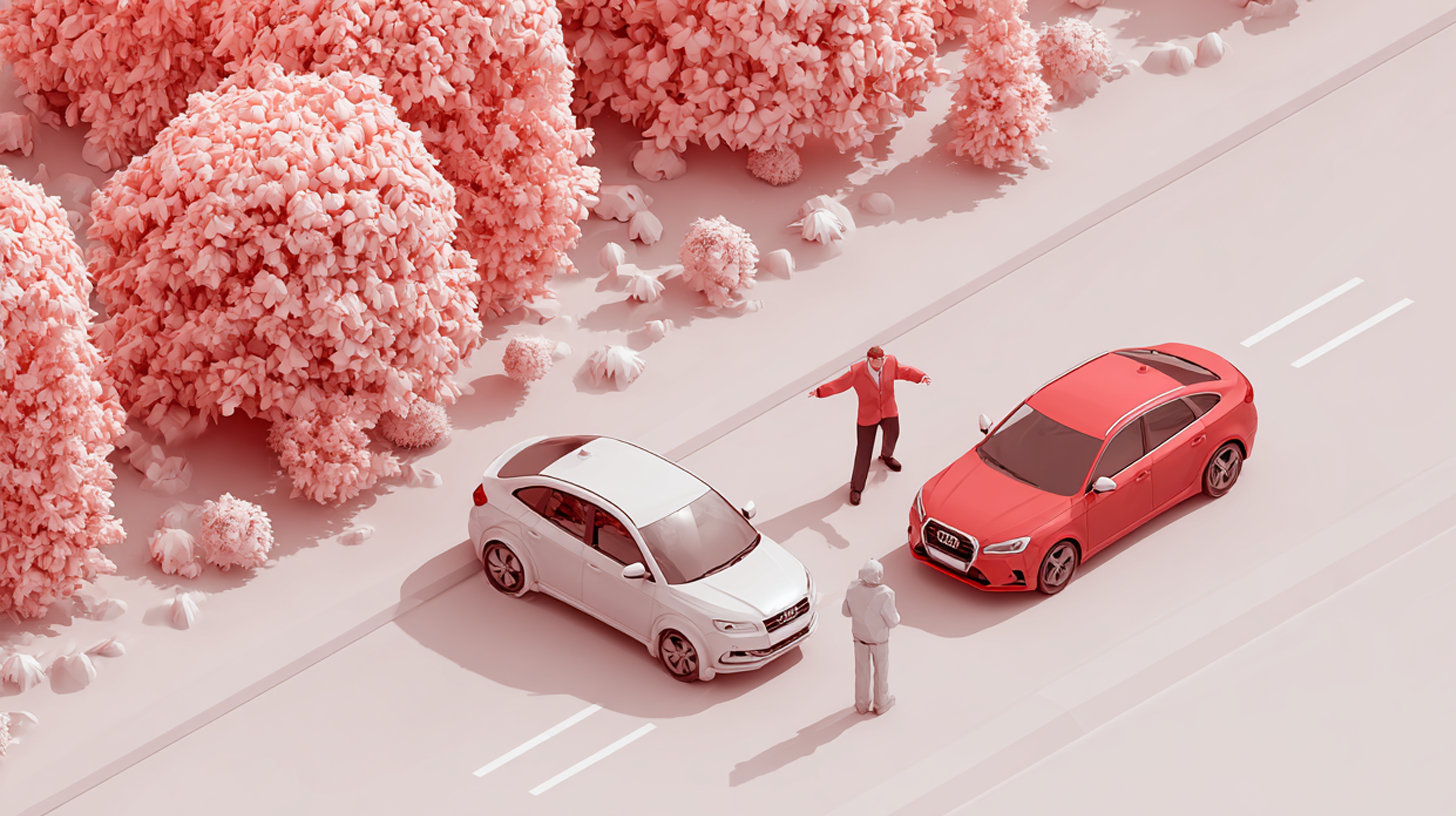
If you are not redirected within 30 seconds, please click here to continue.
Samedi: 10h – 16h HAE

If you are not redirected within 30 seconds, please click here to continue.
If you are not redirected within 30 seconds, please click here to continue.
65% of Ontarians identify distracted driving as the most significant threat: survey

When Karen Bowman’s eight-year-old daughter Kylee was injured in a car accident in 2011, her life changed forever. Bowman’s friend was driving Kylee home from school where they lived just outside of Vancouver. They were stopped at a red light at the bottom of a hill on a highway,
“When the light turned green, she didn’t even have time to begin to accelerate away from the light when they were struck from beyond with enough force to blow out the windows,” says Bowman.
The accident has left Kylee struggling with persistent short-term memory loss even now, and she continues to suffer with chronic pain. Bowman is now the communications director at the Traffic Injury Research Foundation (TIRF).
Distracted driving is an ongoing problem that plagues families across Canada at a growing pace. According to Transport Canada’s National Collision Database, in 2011 – when Kylee had her accident – distracted driving constituted 21.3% of fatal collisions and 23.8% of serious injury collisions.
Their latest figures from 2021 show that distracted driving played a role in approximately 22.5% of fatal collisions and 25.5% of serious injury collisions.
Distracted driving is a complex issue – generally, in everyday life, it is not illegal to check your phone for messages or use GPS to find a location. But when done behind the wheel, it can have dire consequences, both legally and personally.
Two-thirds of Ontarians believe distracted driving is more dangerous than drinking and driving
A recent survey conducted by Rates.ca found that across all age groups in Ontario, 65% of respondents identified distracted driving as a greater cause of motor vehicle traffic deaths than impaired driving.
By comparison, 34% of respondents considered impaired driving the greater threat.
When it comes to what actually constitutes as distracted driving, respondents identified the below as potentially risky behavior:
- 74% considered checking text messages while driving as a form of distracted driving.
- 81% considered using geo-navigation as distracted driving.
- 60% considered using an infotainment dashboard while driving as distracted behaviour.
- 47% considered eating or drinking water/coffee while driving distracted behavior.
“Distracted driving is a contributing factor in one in four fatal collisions in Canada, so it's right up there with speeding and impaired driving in terms of what we should be paying attention to,” said Bowman.
Who’s driving distracted?
As one might expect, there’s a generational split when it comes to who’s more likely to engage in certain types of distracted behaviors, according to the data gathered by Rates.ca.

Younger people (aged 18 to 34) are more likely to use geo-navigation and check their phones while driving, while older people are more likely to reach out for objects.
The trend continues when it comes to infotainment dashboard usage:
- Both younger drivers (18-34) and middle-aged drivers (35-49) are more open to using infotainment features, with 31% being “Somewhat likely” and 23% being “Very Likely.”
- Older drivers (50-65) are less likely to use the dashboard, with only 14% being “Very Likely.”
- Seniors (65+) are the least likely to use the infotainment dashboard, with only 7% reporting “Very likely” and 43% responding “Not likely at all.”
The data gathered by Rates.ca suggests that actually composing a text message is generally avoided by drivers, regardless of age. However, the same cannot be said about eating and drinking habits (or even checking texts), which drivers seem to be more comfortable engaging in.
Both younger drivers (18-34) and middle-aged drivers (35-49) are 70% likely to eat/drink while driving. It is then followed by older drivers (50-65) and seniors (65+) exhibiting a slightly lower likelihood, at 60%.
Digital dashboards bring with them built-in distractions
The phrase “distracted driving” often conjures to mind images of someone rummaging around under their seat with one hand on the wheel. But in actuality, it can be more subtle and much more prevalent, due to the infotainment systems that come with most new car models on the market.
These infotainment systems, which are built-in screens that connect to third-party apps to keep you connected on the road, have completely changed the driving experience. Over 800 car models support CarPlay, which is a media dashboard from Apple that connects your car to your phone and the rest of the Apple ecosystem.
It’s enabled with Siri, Apple's voice assistant, and can be used for making calls or sending messages, playing music, checking traffic, and navigating the roads through Apple Maps. You can even check their day’s schedule on the screen or by voice command.
While convenient, programs such as CarPlay and Android Auto divert attention from the road.
In fact, a 2020 study from a U.K road safety advocacy group IAM Road Smart found that reaction times slowed by over 50% when drivers were adjusting their CarPlay and Android Auto dashboards – nearly four times slower than when they were drinking to the legal limit or even smoking cannabis.
Read more: Auto infotainment systems are making driving more dangerous: study
The myth of multi-tasking, and other psychological hazards
Taking your eyes off the road for a few seconds to skip a song or check a text might not seem like a big deal, but every millisecond is crucial when it comes to driving.
“A lot can happen in a fraction of a second,” says Bowman.
Bowman explains that people can’t actually multitask, per se — as in, do multiple actions simultaneously. Instead, they do what’s called “toggle-tasking” where the brain will switch quickly from one task to another.
When you’re at your most alert, your perception-reaction time is approximately 1.5 seconds. Within this brief window, your brain first processes the hazard (which takes about 0.75 seconds), then signals your need to act.
However, during this time, you haven’t yet taken any physical action. You haven’t lifted your foot off the accelerator or changed the direction of your vehicle.
“In just 1.5 seconds, you’ve already traveled quite a distance,” said Bowman.
Bowman also brings up the cognitive dissonance people have about distracted driving – drivers who think, “It's not ok if others do it, but if I do it it's fine because I'm a safe driver.”
The data suggests that while most of the respondents, regardless of age, recognized that texting, using GPS, eating or drinking and using infotainment are not safe practices while driving, yet many are still likely to engage in them.
In our study, 60% of respondents consider using the infotainment system to be an act of distracted driving, yet 45% of them were at least somewhat likely to engage in it.
The trend continued throughout all age groups across most forms of distracted driving:
- 69% considered reaching for objects in the car is an act of distracted driving, yet 41% were at least somewhat likely to do it.
- 47% considered eating or drinking water/coffee while driving to be distracting, yet 64% were at least somewhat likely to do it.
- 82% considered using geo-navigation to be an act of distracted driving. Meanwhile, 16% were at least somewhat likely to engage in it.
- 79% viewed checking text messages as a danger, while 20% reported themselves as likely to do it (though that number gets higher among the younger age groups).
- 89% viewed composing a text message as a form of distracted driving – and thankfully only 6% were likely to do it.
“The numbers that we're seeing of how many people are driving distracted seems to be contradictory to what people are saying they would or wouldn't do while driving,” says Bowman. However, she warns that the self-reported numbers may be misleading.
“I think for some people, how they interact with their device or even the technology in the vehicle, they haven't yet defined that as being distracting because nothing bad has happened,” she adds.
Driver assistance technology may not be assisting drivers as much as they think
Screens don’t just serve to distract. New cars offer infrared sensors and lasers to help drivers merge into traffic or stay centred in their lanes. With smart bumpers and built-in cameras, blind spots are no longer blind to you – you can see it all on your screen.
Don’t those new features help counteract the potential distractions of all the other stuff?
Not necessarily, says Rob de Pruis, the national director of consumer and industry relations at the Insurance Bureau of Canada (IBC).
He says what worries him is that research is suggesting drivers can become overly reliant on driver assistance technologies, like automatic emergency braking and lane departure warning that detects when a vehicle is crossing lane markings, without fully understanding what their limitations are.
"That's concerning to the insurance industry... you still need to be paying attention and being aware of the circumstances and your surroundings and do the things that you need to do to avoid collisions,” said de Pruis.
Moreover, some drivers mistakenly believe that as long as they have these technologies, they can pay less attention to the road and engage in activities like texting or watching videos — but de Pruis say these can still fail or malfunction.
“The biggest challenge that we have with technology is that it's still fairly new,” he says. “Many drivers may not understand the technology completely or may start to rely on some of the technology too much.”
Read more: Read more: Vehicle safety technologies: Helpful or hindering?
Distracted driving can cost you in more ways than one
While most of the time, distracted driving may not physically harm another person, there are many reasons why you should keep your eyes glued to the road. For one, it pays to drive safely – or at least, it doesn’t cost anything to drive safely.
Officers look for tell-tale signs of distracted driving, like a car weaving between lane-markers, or keeping an excessively wide distance behind another car and then suddenly speeding up. The most obvious one is simply having a phone in your hand.
Ontario has some of the highest fines in the country. If convicted for even a first time, a driver can expect the following:
- A fine between $615 and $1,000.
- Three demerit points on your driving record.
- A 3-day license suspension.
It doesn’t stop there. Your auto insurance provider will almost certainly raise your rates as well.
On average, being involved in a distraction-related incident can lead to a 49% increase in car insurance rates, equivalent to an extra $864 per year for full coverage policies. These heightened rates typically last for three years, potentially costing policyholders over $2,500 in additional expenses.
Any distraction can be a deadly one
Bowman doesn’t know what the other driver was doing when it collided into the car her daughter was in 13 years ago.
“And honestly, I don’t care,” she says. “For me and our family, the specific distraction isn’t as important as what she wasn’t doing, which was to pay attention to the driving task. Had she done that, Kylee never would have been injured.”
And had she done that, Bowman might not have dedicated her life educating people about the dangers of distracted driving to students and people of all ages, which she says remains a “great concern” across Canada.
But the good news is, with enough awareness, people can change.
“(The person) who hit the car did not mean to cause harm that day and I think for me that was really the underlying message,” said Bowman, “It wasn't a bad person that hurt my kid. It was someone who made a bad decision without really understanding the ripple effects of that decision.”
Tips to prevent distracted driving
The Traffic Injury Research Foundation (TIRF) says there are several ways for Canadians to reduce the risk of visual, auditory, manual and cognitive distractions while driving. Here’s what the foundation suggests:
- Secure kids and children with seatbelts/restraints.
- Load music and GPS before driving.
- Keep distracting items out of reach.
- Keep focus on the road and avoid daydreaming.
- Put emotional stressors aside.
- Ensure music and in-vehicle voices don’t block external cues.
- Turn phone notifications to silent.
Bowman says educating yourself and acknowledging the limitations of your brain and the technology you rely on are crucial to reducing the risk.
Bowman’s efforts remind Canadians that every decision made behind the wheel matters, and the that factors contributing to collisions can be prevented.
Methodology:
*Survey conducted by Rates.ca, polling 930 Ontarians between March 23 and 24, 2024 who used Rates.ca's auto insurance quoter.
Get money-saving tips in your inbox.
Stay on top of personal finance tips from our money experts!









